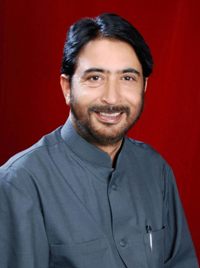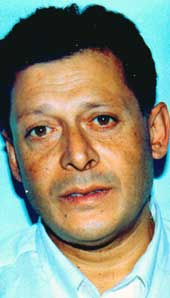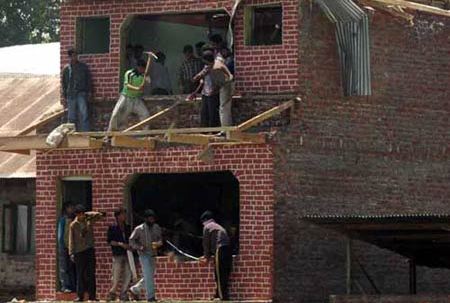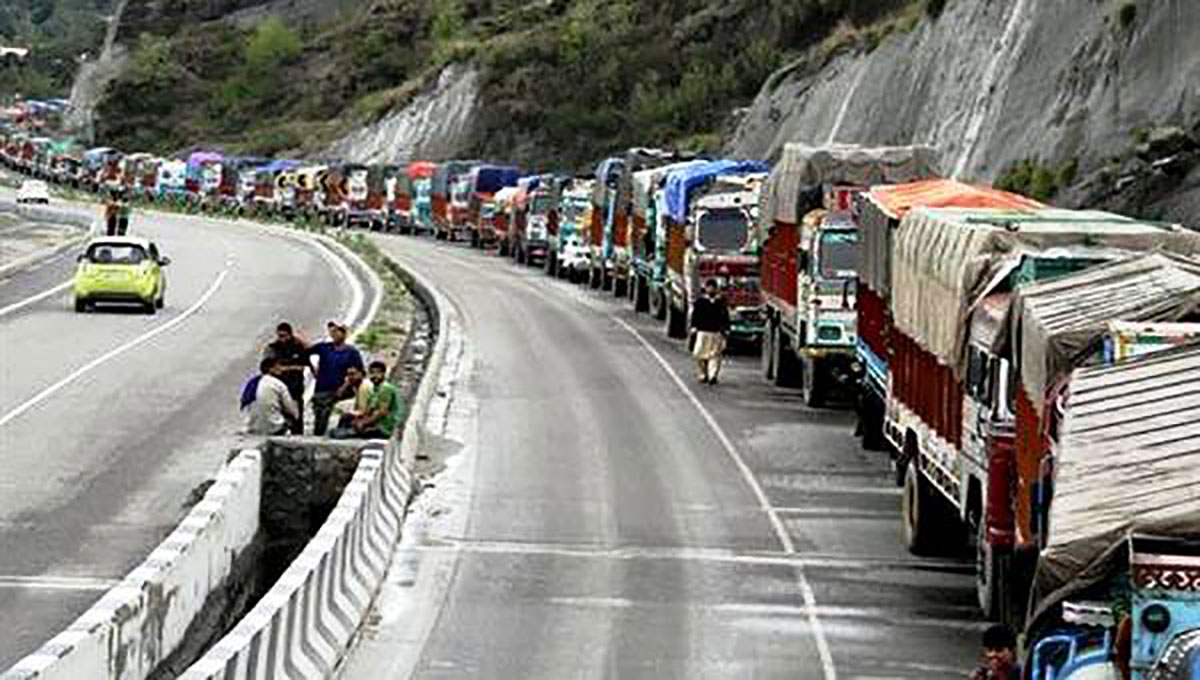Most of the accused including the pimp and her alleged clients were exonerated by a designated CBI court in Chandigarh to which the sensational cases of the 2006 sleaze racket were transferred by the supreme court. revisiting the case, R S GULL reports that while many other cases are still in the trial court, a final call of the high court is yet to take a final call on the split judgment on the petition.
As the CBI special judge Vimal Kumar passed the verdict in his Chandigarh court, exonerating them from the dirt that they carried within and outside the jail since 2006 summer, the accused closed their eyes and were seen taking long breaths. When they opened their eyes in a silent courtroom, they visibly lit up, smiled and walked out expressionless, newspaper reports suggested.
The acquitted include the youngest Congressman Ghulam Ahmad Mir, once projected as the future chief minister of J&K, Raman Mattoo – both former ministers, top bureaucrat Iqbal Khanday, Sabeena, the kingpin who would usually be referred as Champa Bhai in intelligence circles and her husband Abdul Hamid. Outside the courtroom, the public prosecutor and the defence counsel were telling reporters almost the same story about how the accused sailed through in a protracted trial under section 5 of Prevention of Immoral Traffic Act (PITA).
Ranjan Lakhanpal, Mir’s counsel was quoted saying there was no formal complaint against the accused. It was CBI that had accused them of procuring sex but the alleged victims denied they were sex workers. The case fell flat. CBI counsel RK Handa said the ‘victims’ retracted the statement they had earlier made in J&K. “As the victims turned hostile at the stage of cross-examination, the court gave the accused the benefit of doubt and acquitted them,” he said. “In Mattoo’s case, two victims turned hostile while in Mir and Khanday’s case, one each victim turned hostile.”
For CBI, it was not an ordinary case. They had about 100 witnesses and the entire charge sheet was in coded form because CBI was apprehensive that the accused might compromise witnesses. The accused had to approach the Punjab and Haryana High Court to get it decoded. That was perhaps why Handa stated that the CBI had sought prosecution of the witnesses and victims for “turning hostile deliberately by giving false statements”.
This was one of the nine cases registered for various offences, including Section 376 (rape) of Ranbir Penal Code (RPC), Immoral Trafficking Act and the Information Technology Act that were transferred for trial to Chandigarh in September 2006 after 14 accused petitioned the apex court that “no lawyer” in Srinagar was willing to defend them. Evidence process continued for over three years in Chandigarh Sessions Court and later the case was transferred to CBI special court in October 2010. In the remaining cases, accused include a DIG rank officer, two DSPs and one former Additional Advocate General of J&K. Nine accused were named in one case, three each were named in the remaining eight cases as prime accused Sabeena was named in all the cases.
Invariably, the conviction rate is unimpressive for all the crime investigating agencies. It is otherwise low to prove a sexual offence or an exploitation case. The factors leading to a situation in which all the witnesses turned hostile are not known. As the trial was going on, many people aware of the follow-up, knowing the witnesses and by and large the prosecution would end up jointly leaving for trial to Chandigarh, from Jammu, had foreseen the end result. If one goes by one of the exonerated then the entire team would actually land more or less in the same area for putting up for the trial for a day, two or three.
Sleaze has remained part of all societies and Kashmir cannot be an exception. But when it exploded in 2006, it was not a routine call girl racket. Actually, it was a gang of mighty and powerful people misusing their positions to exploit the most vulnerable lot of the society – the women including a ‘minor’. The exploitation had led to the emergence of an officially protected gang of pimps and prostitutes that would have access to the mighty corridors, enjoy the power and sometimes influence decision making. They would supply the vulnerable soft leather to the hungry counter-insurgency grid for deployment as baits and traps and nobody would raise a voice, initial police investigation suggested.
From day one, the police knew the emergence of Sabeena, the cartel Madam. A resident of Uri, she later claimed, she was trying to get her husband freed when she fell victim and was exploited. This paved her way to understand the worth of the ‘comfort market’ and she played it well. At one point of time when she lived in an old city locality, residents came on the roads against her but police could not touch her despite having complete profiles of all her ‘assets’ and ‘beneficiaries’. She finally left that place out of her own free will to create a house in a nearby locality that would later become the brothel.

Years later when the then Chief Minister Mufti Sayeed was briefed about his rivals arranging a sting operation of some of his ministers with Sabeena’s comfort babes, he acted to the extent of getting her house raided. Many men and women were recovered in their birthday suits. It was power and a strong support with in the system that led the Madam slap the police officer in his police station and manage to come out from his custody within a few days after arranging an attorney from outside Kashmir. Interestingly, at one point of time, she was formally protected by the police. Mufti allegedly wrapped the file under the carpet after interacting with the police investigation team in October 2004 but told them straightway that going further will lead to the fall of the government he heads. Her clients managed acquittals and then petitioned courts against the police for damaging their ‘reputation’!
Next time, it was just a video clip that a Mohalla committee handed over to the police n March 2006. Anger started brewing within days after police identified the ‘victim’ who claimed she was drugged, raped and forced into prostitution that led her to give up her studies in eighth standard. A young man who was the darling of counter-insurgency agencies was found instrumental in filming her nude but was freed within minutes of his initial arrest on the intervention of a top police officer.
As the media reported, it opened the Pandora’s Box – one revelation proved after another. All the accused were arrested again and the investigation started with less intervention. As society started reacting to the reportage, Kashmir was heading towards a crisis. It was actually the beginning of a mass unrest, a prelude to 2008 crisis. There were protests, a couple of strikes that eventually led to the destruction of Sabeena’s Chinkral Mohalla house on May 5, 2006. While directing public anger towards the house, the vested interest managed to get tons of material full of evidences scattered in the ‘brothel’ destroyed. It included names and addresses of Madam’s clients, mistresses and protectors’ including films, rape drugs, name plates and photo evidences. Police exploding tear smoke shells and even opened fire but by then the ‘house’ was destroyed completely.
It happened within days after Chief Minister Ghulam Nabi Azad agreed to his Deputy Muzaffar Husain Baig’s suggestion that CBI should investigate this crime. The police left linchpins house unguarded and angry crowds destroyed it. High Court had taken suo moto cognizance of the media reportage and Kashmir Bar Association came with its own PIL. As CBI started investigating (May 11) the cartel – 43 girls brought into the trade through intimidation, blackmail or just on a promise of a job, a madam, 56 men including politicians, cops, officials identified by the ‘minor’ victim, a division bench started monitoring it.
As the CBI started working on the case with the state police support staff, a change was marked on ground. The ‘change’ converted itself into a confidence after the big shots were caught one after another. It started with the arrest of an influential Dy SP followed by two former ministers, an advocate general and then a BSF DIG who surrendered. High Court division bench by that time had laid hands on almost a dozen cases registered by police that exhibited a trend – an accused in one case would stand bail guarantor to another person accused somewhere else in a similar case. It suggested a sort of a trend in which the gang would operate like mafia protecting each other to keep the show going on. Some of these cases were transferred by the bench to the CBI for reintegration.
On June 24, 2006 CBI filed first charge-sheet against nine persons under various provisions of PITA. The accused include BSF DIG S K Padhi, former additional advocate general Anil Sethi, and state police Dy SP M Ashraf Mir. It was only in late July that they could get a defence lawyer as Kashmir Bar Association decided against defending the accused, despite pleas by the state government. The debate converted the crime into a larger political case that could not withstand. Finally the case was shifted to Chandigarh by the apex court.
In October 2007, CBI concluded its investigations and submitted 4000-pages to the court, the bench passed orders

separately. The division bench comprising Justice (rtd) Bashir Ahmad Kirmani and Justice Hakim Imtiaz Hussain were unanimous in terming investigation lax and deficient and asked CBI why certain influential persons who were named and identified by witnesses were left out. The major point of difference was while Justice Kirmani wanted the investigation to proceed against the left-outs from the present point unlike Justice Hussain who suggested the (sessions) court should apply its mind and see if CBI’s decision to leave individuals untouched despite their identification by witnesses was correct or not.
Justice Kirmani gave three groups of accused who were left untouched by CBI: one that were not touched despite lot of material evidence against them, another that failed CBI’s Test Identification Parade (TIP) but have volumes of material against them and finally a set of around 10 people who were the most powerful against whom CBI did not do anything. Those falling in the first two groups included a sitting and two former ministers, seven police officers, an officer, a shady editor and three businessmen. Those who were named in the two groups included three sitting legislators – Ghulam Hasan Khan (PDP), Yuguesh Sawhni (Congress), Haklim Yasin (then a minister), the then Additional DG prisons Rajinder Tickoo, DIG Niyaz Mehmood, and SSPs Mansoor Ahmad, Ashkur Wani, Sheikh Mehmood, DSP Zahoor Malik and Manzoor Naik besides slain MLC Javed Shah, Dr Pretipal Singh, a commissioner rank officer and a former banker. Apart from a racketeer journalist, the bench identified Vijay Kumar and Jitender, whose designations were not immediately known besides hotelier Amit Amla, the grandson of Congressman Tirth Ram Amla, running the Broadway Hotel in Srinagar. It actually was a split judgment.
A split judgment prevented any follow up either from CBI or by the judiciary itself. A longer pause followed. The silence was broken by Congressman Madan Lal Sharma in May 2008 when he told a public gathering that two of his colleagues (then) Assembly Speaker Tara Chand and former PCC Chief Peerzada Mohammad Sayeed were involved in the racket “but they got away” after the party intervened. “If you want to know about Tara Chand, he should be treated like Papu Yadav. We (Congress) fell on the feet of Sonia Gandhi and Ghulam Nabi Azad so that they could remove his name from the list”, Sharma told his workers and the speech was telecast verbatim by many satellite channels. The party, Sharma said, would have collapsed if Tara Chand and Peerzada Sayeed were sent to jail in the scandal.
Many days later Sharma apologized. By then, however, Kashmir Bar Association had sent an application seeking a decision on the split judgment. After remaining refrigerated for seven months, a full bench of the high court comprising Justices N A Kakroo, Virender Singh and J.P. Singh, started picking up threads in May 2008. Many hours were consumed by the debate between the jury, defence and the petitioners about a way out on two judgments that have areas of consensus and disagreement. The day it will be decided, Kashmir Life will report it.
















